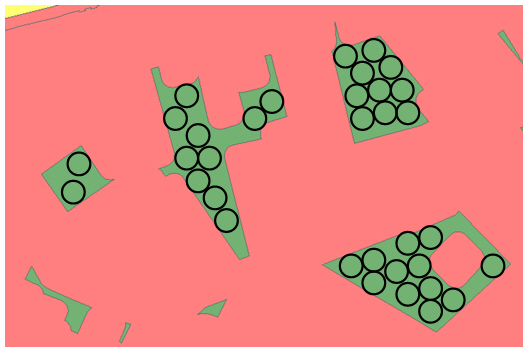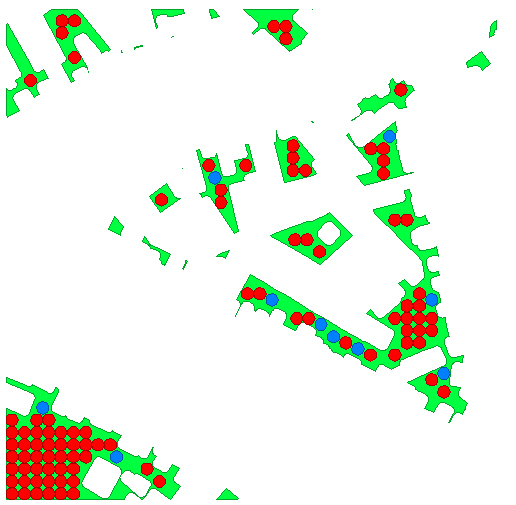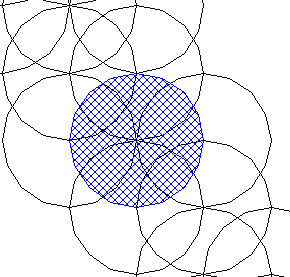I've a very interesting FME challenge. Any ideas and suggestions how to solve this are very welcome.
I've some parcels with irregular shapes and I want to know the maximum of circles (with a radius of 2,5 meter, diameter is 5m)) can be placed inside these parcels without overlap of the circles and without crossing the parcel boundaries.
Below you can see what I mean:
The green polygones are the irregular shaped parcels. I would like to know the maximum number of black cirkels that fit in each of the parcels.

Some remarks:
- The solution I'm looking for doesn't have to be exact, but should be a good estimation.
- The solution doesn't need to give me the circles (but it would be nice), but just the number of circles is fine as well
I have already some ideas, but some good extra suggestions are welcome.
- My first idea would be something like this:
1) create regular grid with circles with radius of 2.5 m, but spaced 1 by 1 m (so overlapping)
2) select all circles which are completely within the green parcel
3) for each parcel, select the circle which is the closest to the boundary
4) for each parcel, deselect the circles which intersect with the circle of step 3
5) for each parcel, select the circle which is the second closest to the boundary
6) for each parcel, deselect the circles which intersects with the circle of step 5
and so on...
Thanks in advance
Bruno






